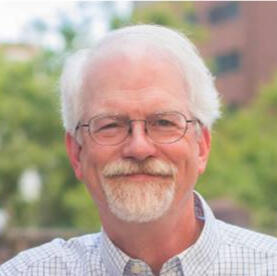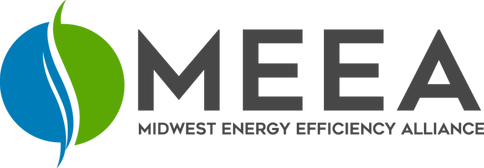Project Summary
2050 Partners (in partnership with Slipstream, Midwest Energy Efficiency Alliance, and LHB) has developed a Minnesota C&S Roadmap document that aims to:
Provide the foundation for developing robust Minnesota Codes and Standards (C&S) support programs that contribute to delivering cost-effective energy savings, and
Recommend pathways for Minnesota utilities to participate in and claim savings from C&S activities.
This project was supported by a grant from the Minnesota Department of Commerce, Division of Energy Resources through the Conservation Applied Research and Development (CARD) program. The report was completed in early 2021 and can be viewed on the Minnesota Department of Commerce website here. The project team conducted a series of stakeholder engagement webinars in the fall of 2020 and early 2021. Recordings and summaries of these webinars are linked below.
What is a Codes and Standards Program?
This project explores the design of “Codes and Standards Programs” that are run by program administrators, including utilities, within their broader energy efficiency and/or demand-side management portfolios. Program models vary by state and jurisdiction but often include one or more of the following activities:
Provide technical support for building energy code advancement (base codes and/or stretch codes),
Provide technical support for appliance and equipment standards at the state or national level,
Support compliance improvement through training programs and other stakeholder engagement strategies,
Conduct “code readiness” data collection efforts to support future C&S rulemakings, and
Facilitate stakeholder planning & coordination between stakeholders impacted by C&S rulemakings.
Most Recent Webinar
Final Webinar: Codes and Standards Program Roadmap Report
Slides available here.
More Information...
Final Webinar: Minnesota Codes and Standards Program Roadmap
Thursday, January 21, 2021 11:00 am Central Standard Time
Energy efficiency programs that support codes and standards (C&S) advancements are amongst the most cost-effective strategies to achieve energy savings and reduce greenhouse gas emissions. 2050 Partners (in partnership with Slipstream, Midwest Energy Efficiency Alliance, and LHB) presents this webinar to summarize the findings and recommendations from their CARD-funded Minnesota Codes and Standards Program Roadmap. The Roadmap has two primary objectives: (1) provide the foundation for developing robust Minnesota C&S support programs that contribute to delivering cost-effective energy savings, and (2) recommend pathways for Minnesota utilities to participate in and claim savings from C&S activities.This project focuses on C&S programs that are run by program administrators, including utilities, within their broader energy efficiency and/or demand-side management portfolios. Program models vary by state and jurisdiction but often include one or more of the following activities:• Provide technical support for building energy code advancement (base codes and/or stretch codes),
• Provide technical support for appliance and equipment standards at the state or national level,
• Support compliance improvement through training programs and other stakeholder engagement strategies,
• Conduct “code readiness” data collection efforts to support future C&S rulemakings, and
• Facilitate stakeholder planning & coordination between stakeholders impacted by C&S rulemakings.This project has been supported by a grant from the Minnesota Department of Commerce, Division of Energy Resources through the Conservation Applied Research and Development (CARD) program.Click below to view the webinar and explore the CIP opportunities for developing new C&S programs. Slides available here.
Looking for more information? Read key takeaways from the three previous deep-dive webinars here:• Webinar #1: Codes and Standards Program Administrators• Webinar #2: Codes and Standards State Officials, Specialists, and Stakeholders• Webinar #3: Codes and Standards Program Evaluation
Webinar 1: Codes and Standards Program Administrators
Wednesday, July 15 2020: 1:00 - 2:30pm Central Time
Codes and Standards program models vary by state and region. This webinar brings together four panelist that collectively have decades of experience implementing C&S programs in other regions, including California, Massachusetts, New York, Rhode Island, and the Pacific Northwest. The panelists will provide insights into their organization’s C&S programs and will discuss recommendations and considerations for Minnesota stakeholders.This session is especially useful for utility program representatives and policy makers.
Panelists and Key Takeaways:

Jeff Harris
Chief Transformation Officer at Northwest Energy Efficiency Alliance
Jeff Harris currently holds the position of Chief Transformation Officer at NEEA and sits on the Board of the New Buildings institute. Jeff has over three decades of experience in energy efficiency including extensive work in codes and standards. Download Jeff's Webinar 1 slides.
Key Takeaways:
A key barrier to code adoption is not having a trained workforce both on the inspection and building sides.
Residential codes are getting close to the end of traditional energy efficiency measures.
Commercial building codes continue to grow more complex, necessitating a need to look at whole building and system performance metrics.
Coordinating across internal business units is an ongoing challenge.
C&S programs drive equity in appliance and equipment standards: once they take effect, they affect every unit sold to every customer regardless of income status or demographic.
C&S programs offer economies of scale in appliance or equipment standards.
To address the issue of increasing baseline, the Northwest counts savings attributable to C&S and reports them to all of the utilities. Most claim them as a part of their regulatory reporting.
C&S work requires specialized knowledge and skills, as it operates in politically charged arenas.
It is important to maintain a long-run view in C&S work – “if not this cycle, then the next.”

Kevin Rose
Senior Strategy, Codes & Standards at National Grid
Kevin Rose leads the design and management of the Codes & Standards support elements of National Grid’s Massachusetts and Rhode Island energy efficiency portfolios. Prior to joining National Grid in 2017, he provided technical guidance to similar efforts to reduce building sector energy use from Maine to Maryland and performed home energy audits in his native New York state. Download Kevin's Webinar 1 slides.
Key Takeaways:
Even though their programs are in the early stages, they have seen an increase in the stability of savings from C&S once they are put in place.
New construction becomes less and less cost effective as it nears Net Zero, and code compliance training has provided a cost-effectiveness boost.
Savings dropped off significantly when only incentive portion of New Construction was allowed.
Leverage what already exists but act proactively where data is lacking. They pulled from west coast frameworks and focused on areas like existing buildings that are difficult to quantify.
Engage in C&S policy discussions as soon as possible.
To address the issue of increasing baselines, they are looking at tying compensation for supporting C&S advancement to the foregone earning opportunity that the utilities would have otherwise had.
Chris Corcoran
Program Manager, Team Lead —Codes, Products, and Standards at NYSERDA
Chris Corcoran leads NYSERDA’s Codes, Products, and Standards team, focusing on regulatory efficiency programs for New York State. His team works directly on energy codes, appliance standards, benchmarking, and building labeling, helping to achieve broad-based greenhouse gas reductions while also saving money for New Yorkers. Download Chris' Webinar 1 slides.
Key Takeaways:
In states where many customers do not pay the public benefit charge and therefore cannot take advantage of rebates, C&S helps reach them as it addresses a broader base.
Increasing baselines from C&S has forced programs to shift from resource acquisition to market transformation.
Pat Eilert
Manager – Codes, Standards, and Crosscutting at Pacific Gas & Electric Company
Pat has worked in energy efficiency for 25 years and manages Codes, Standards, and Crosscutting programs at PG&E: State Building Codes Advocacy, State Appliance Standards Advocacy, National Codes and Standards Advocacy, Compliance Improvement, Reach Codes, Planning and Coordination, Code Readiness, Residential New Construction, Nonresidential New Construction, and Emerging Technologies. Download Pat's Webinar 1 slides.
Key Takeaways:
C&S programs deliver extremely cost-effective savings for customers and cause portfolio innovation.
C&S take all of the good work from incentive programs and make it available to the rest of the market. While an incentive program might reach innovators and early adopters, C&S captures the rest of the market.
It is easier to take new technology through C&S than traditional incentive programs.
It is very important to incorporate data collection development in programs, as there is little good secondary data out there.
From an operations standpoint, consulting teams employed for the work need a broad expertise, and to hire subs with a deep bench of expertise.
Creative conflict on C&S teams is useful to drive the work forward.
Moderator: Alex Chase, Principal, 2050 Partners. Download Alex's Webinar 1 slides.Webinar Format:
[10 min] Introductory comments by Project Team
[40 min] Panel presentation
[30 min] Panel Q&A session
[5 min] Stakeholder survey
[~5 min] Closing comments
Webinar 2: Codes and Standards: State Officials, Specialists, and Stakeholders
Friday, July 31 2020: 1:00 - 2:30pm Central Time
Codes and standards programs include various activities, including but not limited to: building code advancement technical support (local, state, national), appliance standards advancement technical support (state and national), compliance improvement support, code readiness data collection to support future C&S rulemakings, and stakeholder planning & coordination. This webinar brings together four panelists that collectively have decades of experience supporting the development of building energy policies, including building energy codes (both “base” codes and “stretch” / “reach” codes) and appliance standards (state and federal). The panelists will share their insights from interacting with various C&S stakeholders, particularly with C&S program administrators. Within this context, the panelists will discuss recommendations and considerations for Minnesota stakeholders in an evolving C&S landscape.All interested stakeholders are welcome and invited to attend. This session is especially useful for utility program representatives, building code officials, city officials, and policy makers.
Panelists and Key Takeaways:

Marianne DiMascio
State Policy Manager at Appliance Standards Awareness Project
Marianne DiMascio is the state policy manager for the Appliance Standards Awareness Project (ASAP), where she leads state standards development and provides technical assistance to state stakeholders. She is coauthor of States Go First: How States Can Save Consumers Money, Reduce Energy and Water Waste, and Protect the Environment with New Appliance Standards. Download Marianne's Webinar 2 slides.
Key Takeaways:
Stakeholders can best get involved with ASAP and the creation of standards by:
Helping utilities show attribution for state standards.
Providing data on in-state sales and market share of products.
Allowing utilities to gain attribution for the work they do in standards development.
Ensuring that appliance standards are in state energy and/or climate plans. Some state statues give the authority to the Energy Office or Department of Commerce to set regulation. ASAP’s bill model provides proposed language to enable this authority.

Chuck Murray
Senior Energy Policy Specialist, Washington State Department of Commerce, State Energy Office
Chuck Murray has been serving the State of Washington for 29 years, providing original field research, project implementation and policy development in the energy efficiency field. Policy development has resulted in state legislation requiring incremental improvements in energy codes stringency, mandatory building energy benchmarking and the first adoption of ANSI/ASHRAE/IES Standard 100-2018: Energy Efficiency in Existing Buildings as a mandatory statewide standard. Mr. Murray supports development state capital funding for energy efficiency programs, including net zero low income housing. Download Chuck's Webinar 2 slides.
Key Takeaways:
Washington would benefit from a Market Transformation effort, like MEEA’s work in the Midwest.
The SEO relies heavily on NEEA for technical analysis and support, including cost effectiveness. NEEA is also the lead funder of training programs for residential and commercial energy codes.
The SEO has made sure that utilities are able to take credit for their mandatory efficiency programs in the context of these standards. Specifically, in relationship to the Energy Independence Act (which includes the state renewable energy and energy efficiency requirements), utilities continue to take credit for helping to implement these laws.
To be effective, legislation needs to be written in a way that is: enforceable, allows for continuous improvement, and does not go into too much detail.

Richard Graves
Director / Associate Professor, University of Minnesota, Center for Sustainable Building Research
Richard is the Director of the Center for Sustainable Building Research and an associate professor in the College of Design at the University of Minnesota. From 2012 to 2014, he was the Executive Director of the International Living Future Institute, leading the operations and strategic efforts around all of the Institute's signature programs. His research focuses on regenerative design as a fundamentally new approach that must be required of architecture across scales (from the building to the neighborhood to the city) to achieve sustainable and resilient urban development in a dynamic world. Download Richard's Webinar 2 slides.
Key Takeaways:
Additional assessment work needs to be done in the areas of: The cost of increased performance levels; The technologies that are needed; and The sectors that are ready and need training. Legislation and state departments that support these codes.
If Minnesota elects to move beyond adopting national codes to creating them, additional resources, staffing and research would be needed. It is not typical for a state to have robust funding to develop code research. It would be more efficient and effective to share efforts across multiple states. There is significant research to be done on incremental cost and improving the supply chain.

Ian Finlayson
Deputy Director, Energy Efficiency Division at Massachusetts Department of Energy Resources
Ian works for the Massachusetts State energy office (DOER) on the policy development of a number Massachusetts energy efficiency priorities, including the statewide 3-year energy efficiency plans, updates to the building energy code, and residential building energy labeling. Ian has managed the Massachusetts Stretch energy code since its origin in 2008. Prior to joining state government Ian worked for a regional affordable housing developer, and internationally in Afghanistan and Japan. He holds degrees from Edinburgh University, and MIT. Download Ian's Webinar 1 slides.
Key Takeaways:
Support municipal adoption because stretch code does not matter if no one adopts it. Their Green Communities program helps local efforts. Funding and technical assistance are essential. It is a multi-year process for many communities, and therefore a long-term commitment.
Support building code compliance by: Offering training for code officials and industry stakeholders and keeping it as simple as possible and certifying performance.
The residential sector offers the greatest opportunity, particularly in multifamily, where they get the greatest public engagement.
Utility relationships are critical to success. Utility programs can do a lot of technical research and put information together on specific topics, such as lab ventilation and lighting controls. Massachusetts encourages utilities to put forward code proposals as technical experts (either in-house or they can contract out for expertise). It is essential to harmonize with utilities around new construction incentive programs. Code and new construction programs work hand in glove to make it much easier for developers and builders to achieve the code
The utilities are effectively driving participation in HERS through incentive programs, as well as interest in passive house.
Moderator: Alex Chase, Principal, 2050 Partners. Download Alex's Webinar 2 slides.Webinar Format:
[10 min] Introductory comments by Project Team
[40 min] Panel presentation
[30 min] Panel Q&A session
[5 min] Stakeholder survey
[~5 min] Closing comments
Webinar 3: Codes and Standards Program Evaluation
Thursday, August 13, 2020: 10:00 - 11:30am Central Time
A June 2018 LBNL report found that codes and standard programs are the most cost-effective of all energy efficiency programs funded by utility customers in the United States. Only a few states have utility-sponsored Codes & Standards programs and related evaluation protocols established for their energy efficiency portfolios. This panel brings together expert panelists to discuss different C&S program evaluation approaches and considerations for Minnesota.All interested stakeholders are welcome and invited to attend. This session is especially useful for utility program representatives and policy makers.
Panelists and Key Takeaways:

Allen Lee
Executive Director at Cadmus
Allen Lee is an executive director at Cadmus and leads Cadmus’ Codes and Standards business area. He has been involved in all phases of codes and standards from development through evaluation. At Cadmus, he has led more than 20 code compliance studies and evaluated codes and standards programs throughout North America. Download Allen's Webinar 3 slides.
Key Takeaways:
Potential savings are much larger for C&S adoption than for compliance improvement. There is a lack of common understanding that the potential savings from appliance standards is large. In California, more savings come from standards than codes in some years.
The evaluation method is similar to the typical evaluation protocol used for programs. It does, however, differ in asking key questions such as “what policy conflicts exist?” and “what is appropriate baseline?”
Having the evaluator involved in the program early on and providing insights about what would make the program valuable is critical to success. It requires documentation of what the program is doing in terms of technical assistance, research, and support to adopt a code.
The evaluation of codes differs from that of standards. Evaluation for national standards has to look across the national environment and into the process that the Department of Energy undertakes. In states that have the ability to adopt appliance standards, it is more similar to building code evaluation, but the significant difference is the potential for noncompliance in building codes. Noncompliance is much less of an issue in standards than in codes. Data availability is more of a challenge with appliances.

Nick Minderman
DSM Policy & Strategy Consultant at Xcel Energy
Nick Minderman is a Policy and Strategy Consultant and leads energy efficiency and demand response program evaluation for Xcel Energy’s two largest portfolios in Colorado and Minnesota. In addition, as a member of Xcel Energy’s DSM Program Policy and Strategy team, Nick advises on the research and analytical aspects of potential and other market studies, evaluation activities for emerging product areas such as time of use rates and transportation electrification, and supporting policy-making efforts. Nick holds a Bachelors of Geological Engineering from the University of Minnesota, a Masters of Science in Built Environment from The Royal Institute of Technology in Stockholm Sweden and a Masters of Community and Regional Planning from Rutgers University. Download Nick's Webinar 3 slides.
Key Takeaways:
C&S is a statewide effort, even if it is delivered locally.
Several Minnesota utility entities operate in more than one state. Allowing program administrators to streamline their efforts will keep costs down for customers.
Minnesota should leverage the opportunity for program administrators to play different roles according to their strengths (i.e. municipal utilities will have closer ties to the local building department).
Minnesota has a lot of opportunity due to the significant, collective experiences from parties already interacting in the adoption of code, construction of buildings, and merchandising and sales of equipment to customers.
Minnesota only reports gross customer savings and is not accustomed to seeing net to gross values. Therefore, a successful approach would allow Xcel Energy to report something appropriate for a C&S product, while not disrupting the existing product ecosystem. A potential option is the use of a blended baseline. Minnesota could still report gross savings, but it would be adjusted to account for the naturally occurring rise in baseline. If Minnesota reached the consensus that a market transformation framework is fundamentally different from traditional resource acquisition CIP products, it could include an explicit attribution factor.
There are many conversations around codes taking place in Minnesota right now, so a key piece to the report will be to start weaving these conversations together to: Help inform those who are more engaged in CIP of what is happening outside of the programs (including the activities of the two working groups that are currently looking at the future of building codes). Fill in the gaps that have been identified across the different efforts in order to avoid duplicating work, while also making the best use of each stakeholder’s skillset and background.

Alison Lindburg
Building Policy Manager at Midwest Energy Efficiency Alliance
Alison is the Building Energy Policy Manager at MEEA, where she works to improve energy efficiency in buildings in the Midwest via energy codes and market transformation strategies such as energy benchmarking. Prior to MEEA, Alison was the director of the Buildings policy program at the Minnesota non-profit organization Fresh Energy, and also served on the Board of Directors for the U.S. Green Building Council of Minnesota and the Technical Advisory Committee of the GreenStar residential remodeling standard. Download Alison's Webinar 3 slides.
Key Takeaways:
It is one thing to get policy passed, but another to actually know that a state is achieving those savings.
It is important to get the evaluators involved early.
The consideration of both urban and rural communities is an important issue to Minnesotans. There is currently a hearing for Minnesota residential code adoption, where many stakeholders have spoken up about a lack of resources for rural customers. A consideration may be for other utilities to join in on this with the IOUs to create a statewide program. Minnesota could include weatherization assistance programs. If the Minnesota Energy Code Compliance Collaborate could be expanded to have more of a statewide focus, it could help distribute the resources across the entire state.
Moderator: Alex Chase, Principal, 2050 PartnersWebinar Format:
[20 min] Introductory comments by Project Team
[30 min] Panel presentations
[30 min] Panel Q&A session
[5 min] Stakeholder survey
[~5 min] Closing comments





